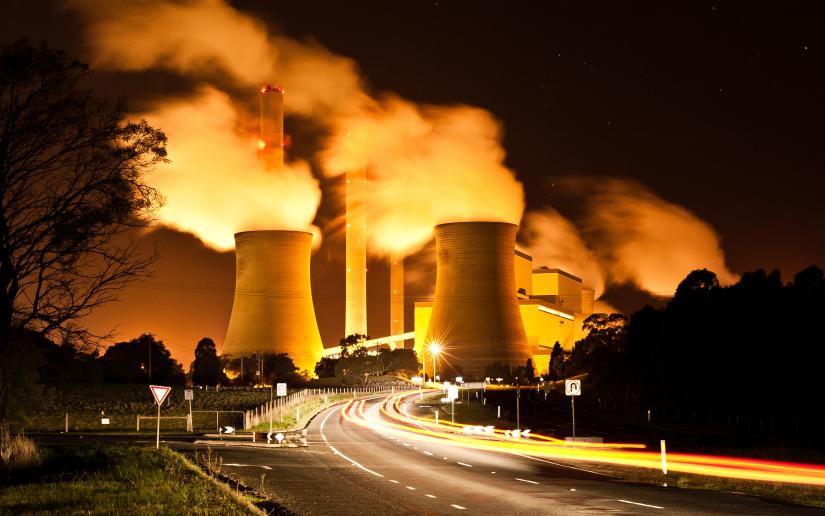The Coalition’s pledge to build seven nuclear reactors, if elected, would represent a huge shift in energy policy for Australia. It also poses serious questions about whether this nation can meet its international climate obligations.
If Australia is to honour the Paris Agreement to limit global average temperature rise to 1.5˚C by mid-century, it can emit about 3 billion tonnes, or gigatonnes, of carbon dioxide (CO₂) over the next 25 years. This remaining allowance is what’s known as our “carbon budget”.
My colleagues and I recently outlined the technological options for Australia to remain within its carbon budget. We did this using a tool we developed over many years, the “One Earth Climate Model”. It’s a detailed study of pathways for various countries to meet the 1.5˚C goal.
So what happens if we feed the Coalition’s nuclear strategy into the model? As I outline below, even if the reactors are built, the negative impact on Australia’s carbon emissions would be huge. Over the next decade, the renewables transition would stall and coal and gas emissions would rise – possibly leading to a 40% blowout in Australia’s carbon budget.
Australia has a pathway to 1.5˚C
Earlier this year, my colleagues and I analysed the various ways Australia could reduce emissions in line with the 1.5˚ goal. The analysis, commissioned by the Climate Council, involved devising emissions-reduction targets for various sectors and industries. We also examined available technologies, the required investments, the potential of various technologies to reduce emissions, and timeframes.
The work produced five main findings:
- Australia can reduce its energy-related CO₂ emissions by 75%, relative to 2005 levels, by 2030. Under this scenario, the energy sector would be entirely decarbonised just before 2050
- Australia has enormous solar potential and significant wind energy potential. To supply Australia’s projected electricity demand in 2050, we need only tap into about 0.5% of this potential
- By 2030, solar power and wind energy (onshore and offshore) would generate about 80% of Australia’s projected electricity demand each year
- The electricity system can remain secure with higher levels of renewables, by deploying a mix of strategies, such as new storage capacity, managing consumer demand and improving transmission infrastructure to get the energy where it’s needed
- Australia can decarbonise its economy with existing technologies, but not with existing policies.
The Coalition’s nuclear energy plan, if enacted, involves replacing seven coal power plants with nuclear reactors, increasing gas-based power generation and slowing the installation of solar and wind generation.
This would put Australia on a totally different emissions path to the one outlined above. But how different?
Nuclear: a change of tack
Using the One Earth climate model, I calculated two scenarios of how the policy would affect Australia’s carbon emissions until 2050. These calculations have not yet been peer-reviewed, but are based on an established modelling tool and publicly available information.
Under the first scenario, the Coalition’s seven nuclear reactors are built and operating by 2040 (bearing in mind this timeframe is highly unlikely to be achieved). The reactors would have a total capacity of about 6.5 gigawatts and produce about 50 terrawatt hours of electricity.
Let’s say Australia wants to stay within its carbon budget of 3 billion tonnes of CO₂ emitted in the three decades to 2050. Would this be achieved under the nuclear plan? The results produced by our model suggest the clear answer is no.
It shows with nuclear in the mix, Australia’s total emissions would rise from 3 billion tonnes to 4.2 billion tonnes – blowing our 2050 carbon budget by 40%.
This assumes two 0.5 gigawatt gas power plants are built by 2030 and another two of the same capacity by 2040. It also assumes the capacity of existing coal-fired power of 16 gigawatts in 2030, 10 gigawatts in 2035 and 5 gigawatts in 2040. The Australian Energy Market Operator expects Australia’s entire coal fleet will be retired by 2038. So this scenario would require extending the life of coal plants.
Under the second scenario, Australia realises nuclear energy is totally unfeasible, and from 2035 reverts to Plan A: an economy powered mostly by renewable energy. But during that lost decade, Australia’s rate of renewable electricity generation stagnates.
In this case, according to the modelling, the delay would cause Australia to blow its carbon budget by more than 100% by 2050 – emitting a total of 6.7 billion tonnes of CO₂.
An economy-wide impact
Any delay to the renewables transition will have repercussions far beyond the energy sector.
The modelling shows Australia’s export industries sectors – especially steel, cement and aluminium – will be heavily affected if our energy sector is not quickly decarbonised, because many of them use substantial amounts of electricity. to see the numbers in more detail.
Around the world, jurisdictions acting to decarbonise their economies are taking steps to ensure their own industries remain globally competitive. For example, the European Union plans to impose financial penalties, in the form of tariffs, on carbon-intensive imports such as steel and cement. The United States is implementing a similar mechanism.
The buildings sector also stands to lose from a delay to the energy transition. Buyers place a premium on low-emissions buildings. If the energy transition slows down, so too does the greening of our buildings sector.
As others have noted, there is no cost-case for nuclear energy in Australia. There is also no solution to the problem of nuclear waste, and the plan is likely to encounter stiff public opposition.
The above analysis shows the Coalition’s strategy will also jeopardise Australia’s emissions reduction efforts. At the end of the day, nuclear is a lose-lose situation for Australia, now and in future.
Sven Teske, Research Director, Institute for Sustainable Futures, University of Technology Sydney
This article is republished from The Conversation under a Creative Commons license. Read the original article.

